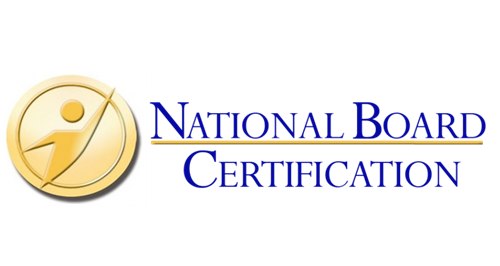
Kahoot allows educators to create quizzes, tests and other learning activities. Its simplicity and ability to measure student performance make it a great tool for gamification, social learning, and microlearning. Because it allows participants to compete for knowledge, it is particularly useful for short sessions. However, it's not recommended for complicated assessments or standardized testing.
Create quizzes, polls, surveys, puzzles, and slides
Kahoot allows you to create quizzes and surveys, puzzles, presentations, and other interactive media. You can either use the questions it has already created or make your own. The site also has an extensive library of images and videos that you can use for your quizzes. For a more personalized experience, you can incorporate videos into your presentations.
Quiz creator lets you create surveys and quizzes suitable for all grade levels. Multiple choice questions can be included in the quizzes. You can also collect feedback through polls and add images or videos to motivate students. To keep track on students' progress, it is possible to download the analytics and reports as a spreadsheet. The analytics reports can be shared with other teachers and school administrators.

Include students in the assessment process
Kahoot's ability to include large numbers of students in the assessment process has attracted much attention. By making feedback sessions more interactive, collaborative, and interactive, the tool facilitates student involvement. Many researchers believe that student participation is crucial to meaningful learning. Kahoot can be used in learning and teaching environments to improve student performance.
The study found that students engaged in Kahoot formative assessments felt that they had retained more knowledge. However, students felt that the test helped them learn more. Kahoot also made learning more fun and engaging for students.
Encourage student participation
Kahoot can be used in the classroom to increase student participation during lectures. It can be used for peer discussion, reflections, and other assessments. It allows you to evaluate student engagement and measure learning. The tool is particularly useful for students enrolled in hybrid or online classes.
Kahoot provides a useful review tool in a social sciences classroom. Future studies should examine the effect of the game on different learning styles and personalities. This might help determine whether gamification has an impact on student performance.

Increase learning performance
Kahoot can be used as a classroom tool to improve student learning on many levels. This tool encourages active participation, which is an essential component of classroom learning. It can be used in core, special, and extracurricular education. It can also be used to improve social skills.
It allows students to create and share content through social media. You can also participate in discussions that are based on correct or incorrect answers. The quizzes are designed with gamification principles in mind, allowing teachers to make it challenging yet fun. In addition, the tool includes a scoreboard, which displays the student's score, and a points system to encourage participation.
FAQ
What is the average salary of a teacher in early childhood education? (earning potential)
The average salary for a teacher in early childhood is $45,000 per year.
However, there is an exception to the rule: salaries in some areas tend to be more than average. Teachers in large urban school districts are often paid more than teachers in rural schools.
Salaries also depend upon factors such as how big the district is and whether or no teacher holds a master's/doctoral degree.
Teachers often start out making less than other college graduates because they don't have a lot of experience. However, their salaries can rise dramatically over time.
Should I choose to specialize in a single subject or branch out into other areas?
Many students prefer to be a specialist in one subject (e.g. English, History or Math) rather than pursuing multiple subjects. It isn't necessary to specialize in every subject. For example, if you're considering becoming a physician, you could choose to specialize in either internal medicine or surgery. You can also choose to be a general practitioner, specializing either in pediatrics or family practice, psychiatry, gerontology, or neurology. You could focus on sales, marketing, finance, research, and management if you are interested in a career in business. The choice is yours.
What is early education for children?
Early Childhood Education is a field devoted to helping children develop into healthy, happy adults. It includes everything from teaching them how to read to prepare them for kindergarten.
Early childhood education is designed to help children grow and learn by providing them with appropriate experiences.
Many early childhood educators are called upon to evaluate the developmental needs of every child they meet. This assessment helps determine whether a particular program would benefit each individual child.
Parents can also interact with teachers and other professionals with experience with young children through early childhood programs.
Early childhood education also requires parents to play a significant role. They need to be able to provide guidance and support for their children, and they must also know how to care for them properly.
Parents are also welcome to participate in activities to help their children learn skills they will use throughout their lives.
Early childhood education is sometimes referred to as preschool education, although this term is used interchangeably with daycare centers. Prekindergarten education starts around three years ago, and early childhood education is similar.
How long should I study each semester?
The time it takes to study depends on many factors.
Some schools may also require that you take certain classes every year. This means that you won't always be able take the same courses every semester. Your advisor can tell you what courses you must take each semester.
How do I apply for college?
There are many methods to apply to college. You can get started by contacting your high school guidance counselor or admissions representative. Online applications are popular among high schools. You can also get in touch with local colleges. Many colleges will accept applications through the Internet via their website.
If you are applying by mail you will need to fill in the application, submit a personal statement and copies of all required documents. You can use the personal statement to tell why you would like to study at this school and what its benefits are to you. The personal statement helps you to communicate your motivations and goals to the admissions committee.
You can find sample essays that you can download from our website.
Is it hard to be a teacher?
You must be a teacher. You will need to give a significant amount time to your studies.
While completing your degree, you can expect to work approximately 40 hours per week.
In addition, you will need to find a job that fits your schedule. Many students have difficulty finding part-time work that allows them to balance schoolwork and their personal lives.
You will likely teach classes once you have been hired as a full time teacher. You may even need to travel to different schools throughout the week.
How do I select my major?
Students choose their majors according to their interests. Some students prefer to major in a subject they enjoy doing because they will find this easier than studying something else. Some students want to go into a field where there is no job. Others are motivated to make a living while studying a major. Whatever your reasons, you should consider what kind of job you might like after graduation.
There are many avenues to find information about various fields of study. Talk to friends or family members about their experiences. Check out newspapers and magazines for possible careers. Ask your guidance counselors at your high school for information about possible careers. Visit Career Services in your local library. Check out books related to various topics at your library. You can search the Internet for information about specific careers.
Statistics
- And, within ten years of graduation, 44.1 percent of 1993 humanities graduates had written to public officials, compared to 30.1 percent of STEM majors. (bostonreview.net)
- They are also 25% more likely to graduate from high school and have higher math and reading scores, with fewer behavioral problems,” according to research at the University of Tennessee. (habitatbroward.org)
- Data from the Department of Education reveal that, among 2008 college graduates, 92.8 percent of humanities majors have voted at least once since finishing school. (bostonreview.net)
- Globally, in 2008, around 89% of children aged six to twelve were enrolled in primary education, and this proportion was rising. (en.wikipedia.org)
- Among STEM majors, that number is 83.5 percent. (bostonreview.net)
External Links
How To
Why homeschool?
When choosing whether to homeschool or send your child to school, there are several factors to consider.
-
What type of education do you want for your child? Are you looking for academic excellence or social skills development?
-
How involved would you like to be in the education of your child? Are you more interested in being kept informed about your child's progress? Would you prefer to be informed about your child's activities? Or would it be better for you to let them make their own decisions?
-
Do you have any special needs for your child? Do your children have special needs?
-
Will you be able to manage your child's schedule? Can you make a commitment to your child's education at home every day of the week?
-
What subjects will your course cover? Math, science, language arts, art, music, history, geography, etc. ?
-
How much money can you afford to educate your child?
-
Is your child able to go to school?
-
Where will you house your child? You will need to find a place large enough for your child's classroom and provide adequate facilities like bathrooms and kitchens.
-
What is your child’s approximate age?
-
When does your child go to bed?
-
When does he/she finally wake up?
-
How long does it take for you to get from A to B?
-
Is your child's primary school close to you?
-
How far are you from your child’s school?
-
How will you get your child from one place to another?
-
What are some of the benefits of homeschooling
-
What are the disadvantages?
-
Who will supervise your child when he/she is outside?
-
What are you expecting from your child's education?
-
What kind of discipline will you use?
-
What curriculum will your school use?
There are many reasons why people decide to homeschool their children. Some of them are:
-
Your child may have learning disabilities that prohibit him/her attending traditional schools.
-
You are interested in providing an alternative type of education for the child.
-
You require more flexibility in your scheduling.
-
You do not want to have to pay high tuition costs.
-
You think your child is receiving a better education in this school than you would receive in a traditional setting.
-
You believe you are better at teaching your child than a teacher in traditional schools.
-
You don’t like the way that schools work.
-
You are uncomfortable with the rules and regulations in the school system.
-
You want your child to develop a strong work ethic.
-
You want your child's freedom to choose the courses they take.
-
You want your child to receive individual attention.
Another benefit of homeschooling is:
-
There is no need to worry about uniforms, books, pencils, paper, or supplies.
-
You can tailor your child's education to suit his/her interests.
-
Parents can homeschool their children and spend time with them.
-
Homeschooled students tend to learn faster because they are not distracted by peers.
-
Homeschoolers score higher on standardized exams.
-
Homeschool families tend be happier overall.
-
Homeschoolers are less likely to drop out.